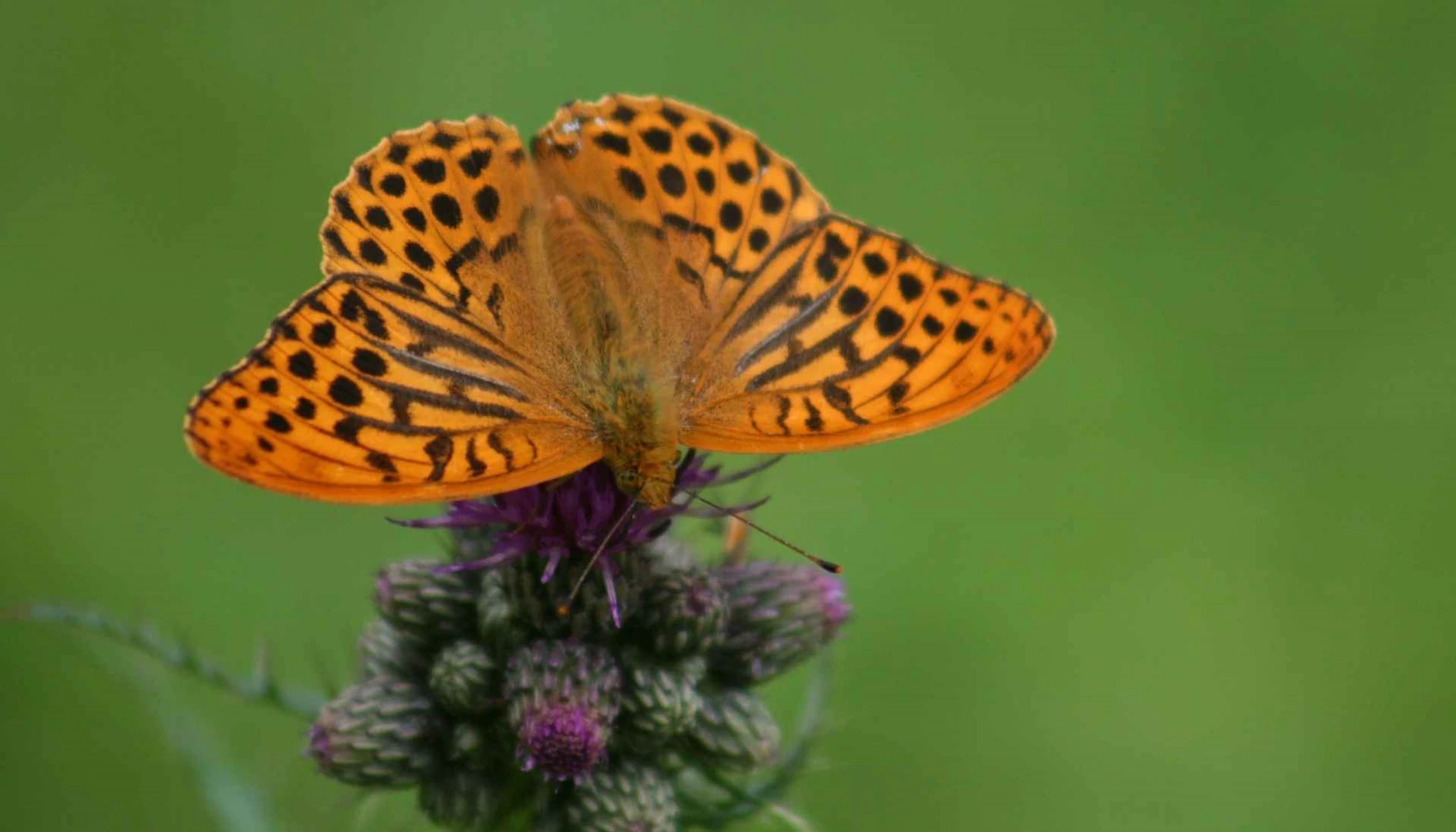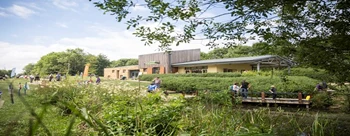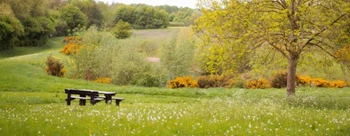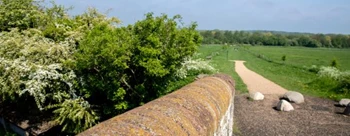Wildlife Blog: Butterflies

Pictured above: Silver-washed Fritillary
The Butterfly Conservation, the charity which specialises in these colourful insects, has just announced its latest findings on the fortunes of our native butterfly species…and it does not make happy reading. Half of our 60 or so native species are threatened with extinction following decades of habitat loss and population declines. These butterfly species are listed as Threatened or Near Threatened on the government’s Red List – a document which identified the most endangered flora and fauna in the British Isles. A glimmer of light is that targeted conservation work across the UK is helping some of our most endangered butterflies to increase their range.
Habitat fragmentation and climate change are the main drivers of these losses. One of the species declining most rapidly is the delicate Wood White, a smaller cousin of the more familiar Large and Small Whites (themselves less common than in former times). Once found in Howe Park Wood and other local woodlands, the wood white has not been recorded in Milton Keynes since the mid 1990s. Fortunately, the species thrives in some woodlands just over the county border in Northamptonshire and it is possible it could recolonise Milton Keynes in the future. We have also lost the once common Wall or Wall Brown butterfly in the last 20 years. This is a bright orange-brown butterfly associated with stone walls and dry, stony areas. Our loss of this species mirrors the national decline and the Wall butterfly has now retreated largely to the coastline, where it remains common.
Some 37 butterfly species have been recorded in Milton Keynes’ parks and woodlands, although usually 32-33 are seen in any one year. Encouragingly, some scarce butterflies are showing signs of recovery helped by sensitive management of their habitats. The Small Blue butterfly (and it really is tiny!) was previously known from only one site in Bletchley. Its caterpillars depend on one sole foodplant, kidney vetch, and we have successfully introduced this plant into several other sites including Stonepit Field and Stanton Low. Even this week, our volunteers have been sowing the seed and planting kidney vetch plants at several locations. The small blue has responded with a small population now established at Stonepit in Great Linford and several individuals recorded at other sites.
 Pictured above: Small Blue
Pictured above: Small Blue
More impressive has been the recovery of the Silver-washed Fritillary. This handsome, golden fritillary is one of our largest woodland butterflies and was absent from local woods from the late 1960s onwards. The caterpillars feed on violets and as the traditional practice of woodland coppicing ceased, most woodlands became to dense and shady to allow violets to flower. The revival of coppicing has seen a dramatic increase in the fritillary, which can now be seen gliding through most of our larger woodlands in June and July. A few lucky residents have even reported seeing this butterfly in their gardens. This species is now more common that at any time in the past 50 years and is no longer considered a priority species in the Trust’s Biodiversity Action Plan.
We monitor butterfly numbers in our parks with the means of butterfly transects – set walks through suitable habitat where all butterflies are counted every week between April and September. The results are supplied to Butterfly Conservation and so help inform national statistics and datasets. It also enables us to see which areas of our estate support the best populations and where we might be able to improve or better connect habitats to allow butterflies to thrive.
Thank you to our biodiversity team and our conservation volunteers who make it possible for us to monitor the population of these much-loved pollinators in Milton Keynes.










